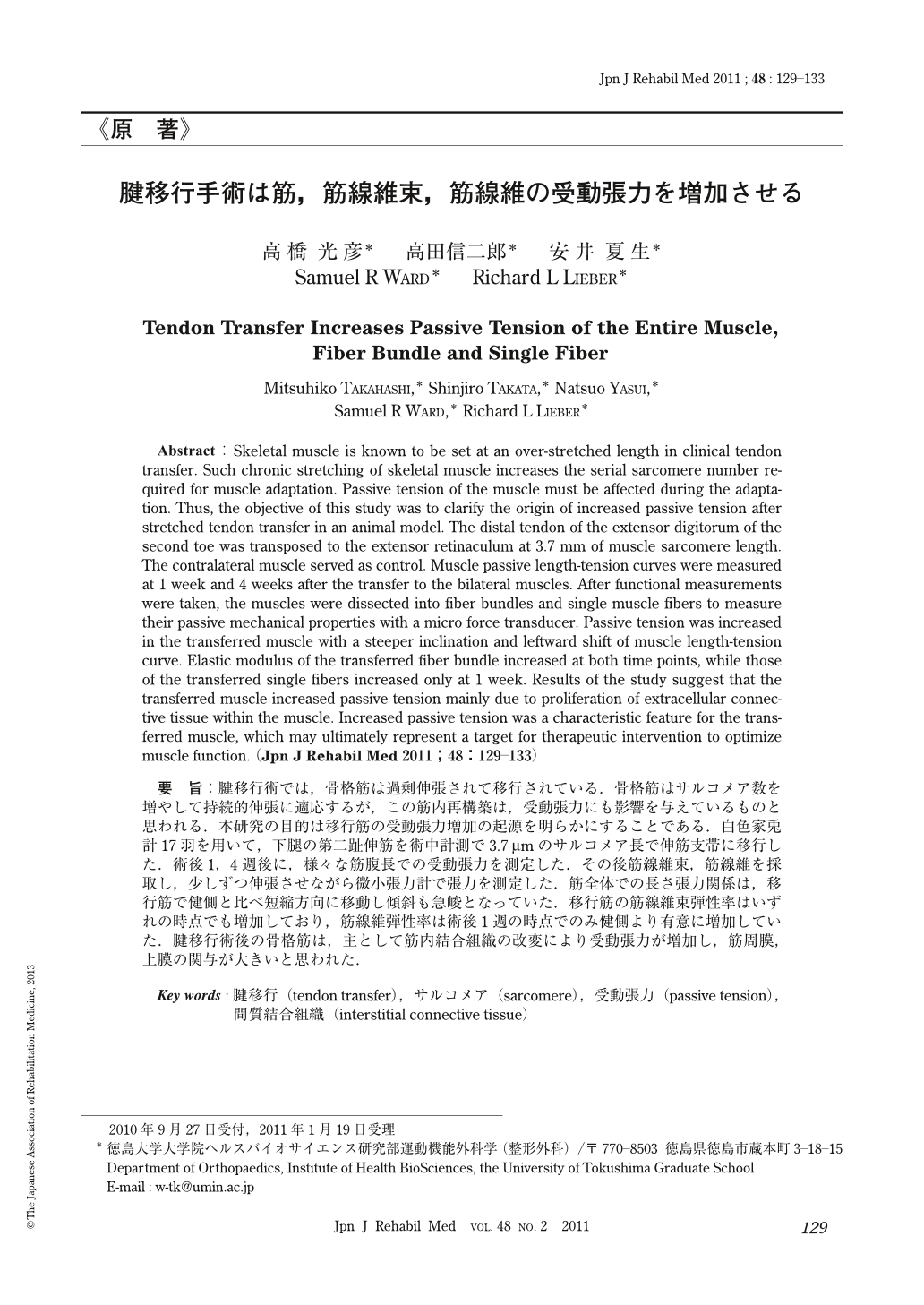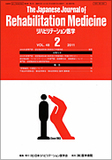Japanese
English
- 販売していません
- Abstract 文献概要
- 1ページ目 Look Inside
- 参考文献 Reference
要旨:腱移行術では,骨格筋は過剰伸張されて移行されている.骨格筋はサルコメア数を増やして持続的伸張に適応するが,この筋内再構築は,受動張力にも影響を与えているものと思われる.本研究の目的は移行筋の受動張力増加の起源を明らかにすることである.白色家兎計17羽を用いて,下腿の第二趾伸筋を術中計測で3.7μmのサルコメア長で伸筋支帯に移行した.術後1,4週後に,様々な筋腹長での受動張力を測定した.その後筋線維束,筋線維を採取し,少しずつ伸張させながら微小張力計で張力を測定した.筋全体での長さ張力関係は,移行筋で健側と比べ短縮方向に移動し傾斜も急峻となっていた.移行筋の筋線維束弾性率はいずれの時点でも増加しており,筋線維弾性率は術後1週の時点でのみ健側より有意に増加していた.腱移行術後の骨格筋は,主として筋内結合組織の改変により受動張力が増加し,筋周膜,上膜の関与が大きいと思われた.
Abstract : Skeletal muscle is known to be set at an over-stretched length in clinical tendon transfer. Such chronic stretching of skeletal muscle increases the serial sarcomere number required for muscle adaptation. Passive tension of the muscle must be affected during the adaptation. Thus, the objective of this study was to clarify the origin of increased passive tension after stretched tendon transfer in an animal model. The distal tendon of the extensor digitorum of the second toe was transposed to the extensor retinaculum at 3.7 mm of muscle sarcomere length. The contralateral muscle served as control. Muscle passive length-tension curves were measured at 1 week and 4 weeks after the transfer to the bilateral muscles. After functional measurements were taken, the muscles were dissected into fiber bundles and single muscle fibers to measure their passive mechanical properties with a micro force transducer. Passive tension was increased in the transferred muscle with a steeper inclination and leftward shift of muscle length-tension curve. Elastic modulus of the transferred fiber bundle increased at both time points, while those of the transferred single fibers increased only at 1 week. Results of the study suggest that the transferred muscle increased passive tension mainly due to proliferation of extracellular connective tissue within the muscle. Increased passive tension was a characteristic feature for the transferred muscle, which may ultimately represent a target for therapeutic intervention to optimize muscle function.

Copyright © 2011, The Japanese Association of Rehabilitation Medicine. All rights reserved.


